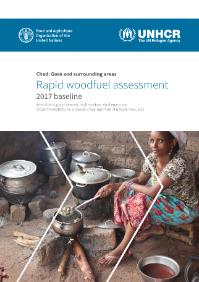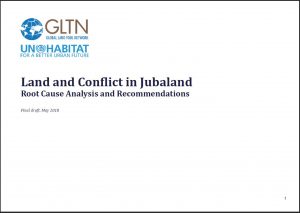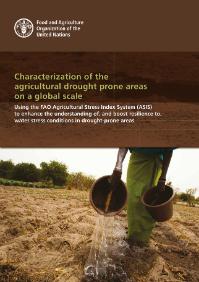The habitat of tsetse fly (Glossina spp.) depends upon climatic conditions, host availability and land cover characteristics. In this paper, the Land Cover Classification System (LCCS), developed by the Food and Agriculture Organization (FAO) and the United Nations Environment Programme (UNEP…
Geospatial datasets and analysis techniques based on geographic information systems (GIS) have become indispensable tools in the planning, implementation and evaluation of a wide range of development programmes, including actions addressing sustainable agriculture and rural development. The…
Access to safe water and sanitation and sound management of freshwater ecosystems are at the very core of sustainable development. This is the aim of Sustainable Development Goal 6 (SDG 6), which includes approaches to water management supported by international cooperation, capacity building…
El 11 de mayo de 2017 se celebró el quinto aniversario de la aprobación de las Directrices voluntarias sobre la gobernanza responsable de la tenencia de la tierra, la pesca y los bosques en el contexto de la seguridad alimentaria nacional (en adelante, Directrices voluntarias) por el Comité de…
En 2016, el Centro para la Autonomía y el Desarrollo de los Pueblos Indígenas (CADPI), junto con el equipo de Pueblos Indígenas de FAO y el apoyo técnico del equipo de Tenencia de la Tierra de FAO, implementaron un programa de desarrollo de capacidades para y con los pueblos indígenas de…
The two waves of refugees from the Central African Republic has provoked one of the most severe humanitarian crises in Central Africa and in the South of Chad. The different camps around the city of Goré host a population of more than 90 000 individuals of which 35% are refugees, 21% are…
Pastoral livestock production is crucial to the livelihoods and the economy of Africa’s semiarid regions. It developed 7,000 years ago in response to long-tern climate change. It spread throughout Northern Africa as an adaptation to the rapidly changing and increasingly unpredictable arid…
The leaflet will provide an overview of in-country projects and achevements as well as regional initiatives. Articles include but are not limited to: Community lands at the core of Kenya’s new legal reforms; The Voluntary Guidelines: an instrumental tool in the pursuit of climate mitigation…
The aim of the study is to investigate the land-related causes of conflict in the Jubaland State of Somalia. The study findings are expected to guide the work of the UN in peace building and land conflicts management and to inform land policy processes and other land governance interventions in…
Report, prepared by FAO and the OECD with inputs from IFPRI, IFAD, the World Bank and WTO, submitted to the G20 Presidency of the Republic of Argentina in response to the Presidency’s request for information on future trends and challenges faced by global agriculture, with a special focus on the…
Drought is one of the main causes of food insecurity. In 2011, the horn of Africa has faced the worst drought in 60 years. An estimated 12.4 million people suffered from a massive food shortage. To mitigate the impact of agricultural drought, it is of high importance to dispose of timely and…
Land, fisheries, forests and other natural resources provide a basis for livelihoods and social, cultural and religious practices. However, most people in rural areas in developing countries do not have any form of documentation to protect their land and natural resources rights, which puts…













